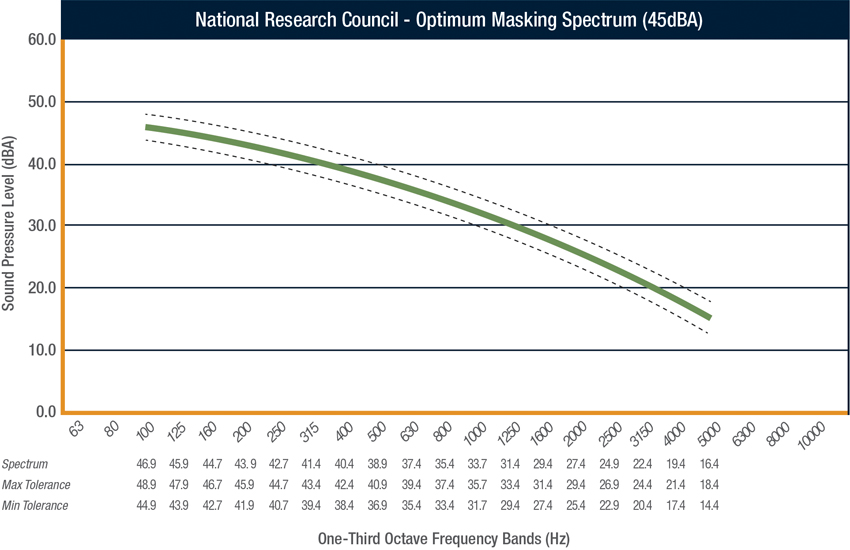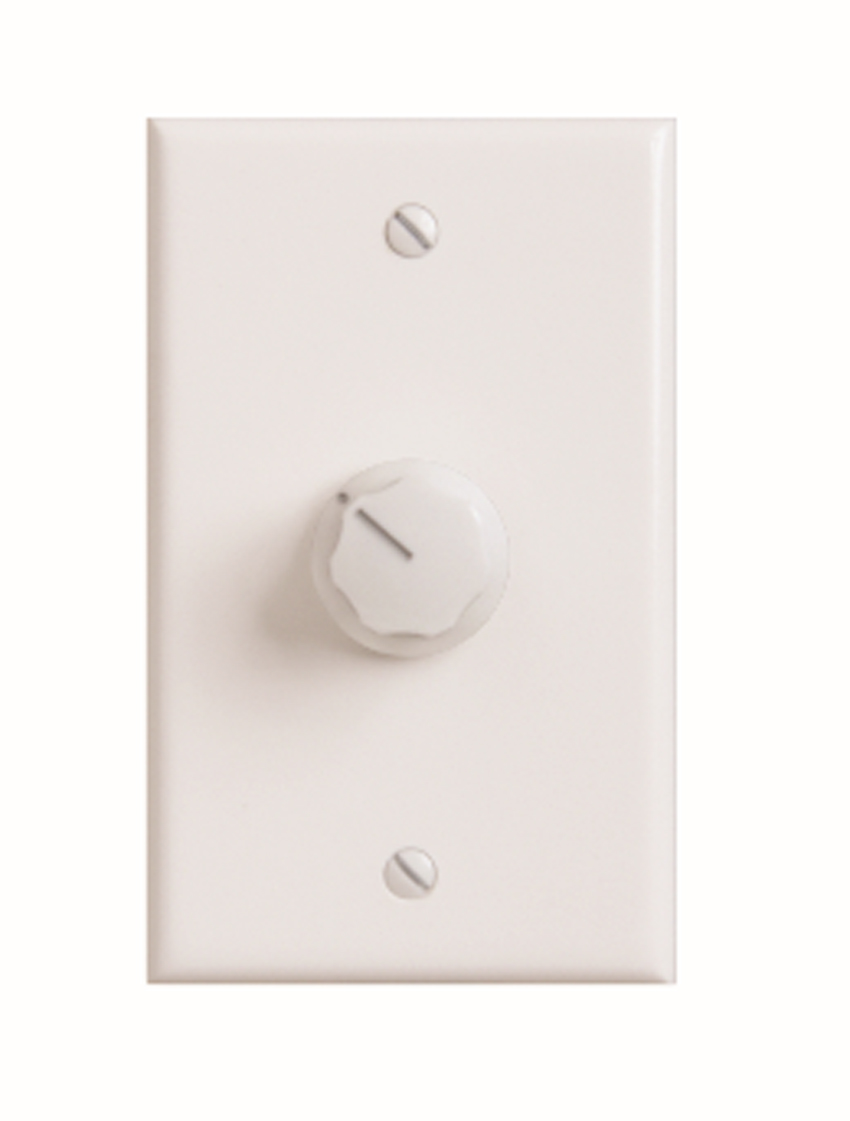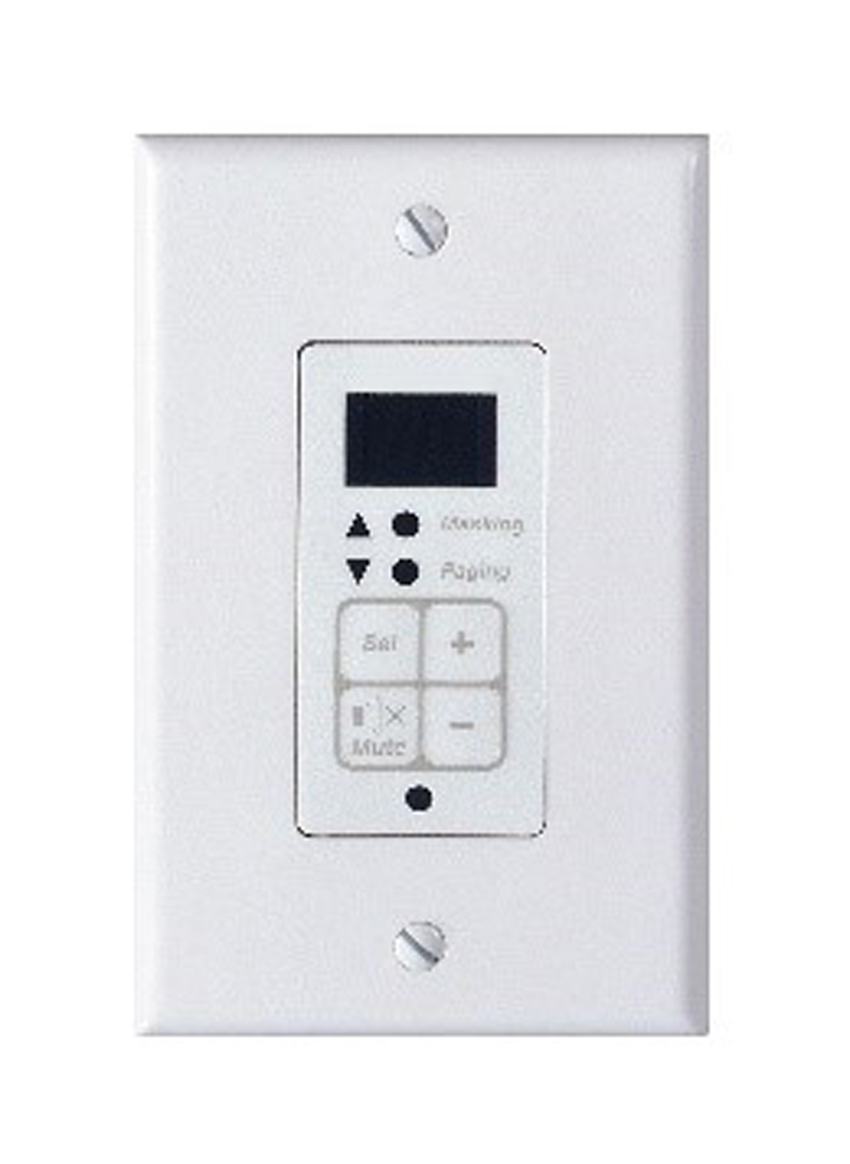A New Approach to Acoustics
Future Flexibility
The fact that a range of adjustment is ‘left on the table’ provides an additional advantage.
When sound masking is incorporated into the facility design, one also has the opportunity to increase the background sound level if the partition construction fails to live up to its rated level—for example, as a consequence of common deficiencies such as flanking paths—and remedial action would be cumbersome and/or costly. While the minimum planned level should be at least 30 dBA, as noted above, the level traditionally recommended in most closed rooms is 40 to 43 dBA, leaving a range of adjustment at the facility manager’s disposal.
Of course, this rationale can also be applied to existing spaces that are not performing as expected. However, by waiting to install masking post-occupancy, an organization forgoes the opportunities to reduce construction costs and the specifications for other acoustic treatments.
Design, Tuning & Reporting
It is important to note this type of integrated acoustic design is only viable when the minimum background level is precisely generated and consistently delivered by the sound masking system. Once constructed, the acoustical properties of walls and ceilings cannot be easily changed—and, once engineered and installed, neither can the sound masking system’s architecture.
ASTM E1111-14, Standard Test Method for Measuring the Interzone Attenuation of Open Office Components acknowledges variations as small as 2 dBA can significantly influence speech privacy, while other studies indicate even a single dBA affects comprehension by up to 10 percent and, in almost every situation, impacts the Articulation Index by 0.0333. Variations in spectral quality can have similarly negative effects.
Therefore, it is incumbent on those responsible for acoustical planning to ensure the sound masking system is designed and implemented with due consideration for these stringent requirements. A poorly designed or improperly tuned system can allow as much as 4 to 6 dBA spatial variation, meaning the system’s effectiveness is halved in unpredictable areas within the facility.
Closed Rooms
As noted earlier, not all system architectures can provide effective and comfortable masking sound in the fragmented and individual environments presented by private offices and other closed rooms. So, what is current best practice in these areas?
First, each room should be provided with its own loudspeaker. In open plans, loudspeakers are typically located according to a standard grid at 15-foot (4.5 m) spacing. Including closed rooms in this pattern reduces localized control because one loudspeaker may span more than one room. Zones within open plan should not exceed three loudspeakers or 625 sf (58 m2).
Second, the loudspeaker should be allocated to its own control zone. Ideally, this means that it is fed by a dedicated masking sound generator and that it also has dedicated volume control and third-octave equalization. Having a number of loudspeakers connected to a shared set of controls inherently limits the system’s ability to meet the specified masking curve in each closed room.
Third, each zone should offer precise output adjustments for both volume (i.e., 0.5-dBA increments) and equalization (i.e., third-octave over the specified masking spectrum, which is typically from 100 to 5000 Hz or higher). Following installation, the vendor should tune each zone at ear height (i.e., where occupants experience the masking effects) and provide a detailed report of the results.
The masking spectrum in closed rooms should be identical to that used in open plans; however, the overall sound level will typically be several decibels lower. This provides a good degree of consistency between the open and private spaces, but addresses the occupant’s expectation that the ambient levels in smaller rooms are lower than in large open venues. Overall masking levels in private offices usually range from 42 to 45 dBA, but as stated above, benefits can even be realized at lower volumes.
A well-designed and professionally tuned system is able to keep variations in masking level to ±0.5 dBA and those in frequency to ±2 dB per third octave, providing dependable coverage throughout treated areas. ASTM E1573-18, The Measurement and Reporting of Masking Sound Levels Using A-Weighted and One-Third-Octave-Band-Sound Pressure Levels is predominantly be used by acousticians tasked with verifying the performance of an installed and calibrated sound masking system against a specification outlining such target levels and tolerances. However, sound masking vendors should also follow this standard to ensure they provide good data for the verification process.3 As with the aforementioned ASTM E1374-18, this standard’s title has also been updated to reflect the fact that sound masking is used in closed rooms as well as open plans.
Indeed, the debate over whether sound masking should be included in closed rooms should be put to rest. In almost all situations, it is better to combine a reasonable amount of isolation with a reliable ambient level, allowing organizations to save on wall construction by reducing the STC ratings of walls and/or using floor-to-ceiling rather than deck-to-deck construction. As long as the system is properly engineered for this type of environment, it is possible to provide the client with a suite of acoustic benefits that could not otherwise be achieved in private offices and other closed spaces, and also prevent the noticeable voids in the background sound level that are created when masking is only applied to open plans.

Credit: KR Moeller Associates Ltd.
The National Research Council’s (NRC) optimum masking spectrum, as well as one-third octave band tolerances of ±2 dBA.
Providing Occupant Control
An in-room control can permit occupants in closed rooms to regulate the masking level, as well as paging and background music. While such individual control is undesirable in shared open plan areas, closed rooms should afford a measure of personal control.
In-room control can be provided via hardware, such as a programmable keypad or rotary volume control, a software application, or integration with third-party equipment. However, when such controls are offered, there are additional functional considerations. For instance, the user should not be given unfettered control over masking level. If an occupant is allowed to mute or lower the volume beyond a certain limit, others’ speech privacy will suffer. Also, frequency control should not be included because the user has neither the tools nor the training required to make informed adjustments to the masking spectrum. If occupants are given control in closed rooms that are shared, it may also be desirable to have those user adjustments reset automatically at certain times, restoring masking and paging levels to default settings.
It is important to note that the masking level in a private office will not interfere with communication inside the room itself. The average level of a typical voice is 55 to 65 dBA at conversational levels, and the distance between two people talking in a private office is not sufficient for the masking to interfere with intelligibility.2 Also, if the masking in a conference room is tuned to 42 dBA or in-room control enables occupants to adjust the level, it should not conflict with the signal-to-noise ratio required for good microphone response during video or teleconferencing.
In order to maintain the SPP of various adjacencies, the continuous minimum background sound level cannot be set below the defined minimum. However, there are conditions under which it may be advantageous to allow occupants to increase it. For example, sleep disruption is one of the greatest design challenges for hospital patient rooms and hotel guest rooms. A significant number of arousals and awakenings occur as a result of noises originating both inside and outside the room. While the minimum background sound level must be maintained to ensure speech privacy between adjacencies, it is possible to empower the occupant to raise their room’s masking above this level in order to cover or lessen the disruptive impact of noises. Indeed, due to its ability to reduce the quantity and severity of volume changes (i.e., dynamic range), sound masking has been shown to be an effective method of improving sleeping conditions.


Credit: Zahid Ghafoor
If occupants are given personal control over the sound masking level using programmable keypads, the system should prevent them from setting it lower than the minimum previously established for speech privacy within the facility.









